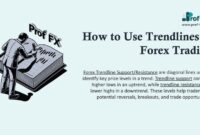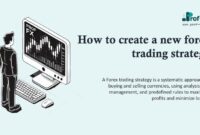Worried That the Currency Is Getting Too Weak
Why would a government worry that its currency was getting too weak? Doesn’t a weak currency make it easier for the country to export its goods and services?
Yes, it does. However, governments start to worry about price instability if their currencies lose too much value. Also, other governments whose currencies are stronger start to worry when a country’s currency starts getting too weak and putting added pressure on the global economy.
Let us illustrate this concept by explaining the antithesis of the Plaza Accord—the Louvre Accord. (Hey, another agreement named after the place where it was signed.)
Louvre Accord
On February 22, 1987, only a year and a half after the Plaza Accord had been signed, officials from the same countries, plus Canada, to the effectiveness of the coordinated intervention put into motion loll by the Plaza Accord, the U.S. dollar had continued to move lower and lower until instead of being uncomfortably overvalued, it was now uncomfortably undervalued.
The Plaza Accord had helped the United States pull its trade deficit with Western Europe back into a respectable range, but it hadn’t done much to address the U.S. trade deficit with Japan, and the countries of Western Europe were sick of supporting a weaker U.S. dollar. After all, a weaker U.S. dollar meant that U.S. consumers couldn’t import as many goods from Western Europe as they used to, and that was hurting the Western European economies.
So after 17 short months, the Louvre Accord canceled out the Plaza Accord, and each country went on its merry way.
Recent Intervention
More recently, if you can call a decade ago more recent, we saw the zone (via the European Central Bank [ECB]) and the United States (via the Federal Reserve) intervene in the currency market to stabilize a declining euro.
The euro had just been launched at the beginning of 2000, and, much to the dismay of the members of the Eurozone and the rest it the global community, it had been dropping ever since. Finally, on September 22, 2006 the European Central Bank decided to slop in and intervene in the market to try to buoy the value of the euro by buying euros. A few weeks later, on November 3, 2000, the European Central Bank stepped in again and intervened in the same way.
Just in case you were wondering whether this action was a unilateral action, five days later, on November 8, 2000,8 the Federal Reserve jumped in and started buying euros in a coordinated effort with the European Central Bank.
These actions eventually stabilized the value of the euro, and it has been a dominant player on the Forex world stage ever since.
Pegging the Currency to Another Currency
Some governments—like China, Hong Kong, Saudi Arabia, Denmark, and others—peg their currencies to another currency-like the U.S. dollar or the euro—in an attempt to maintain a level of stability as they operate in the global financial markets.
Pegging a currency to another currency requires constant intervention in and manipulation of the Forex market. Any time the demand for a pegged currency picks up, that government has to respond by increasing the supply of its currency by selling and/ or creating more of the currency if it wants to ensure that prices remain stable. Conversely, any time the demand for a pegged currency drops off, that government has to respond by decreasing the supply of its currency by buying and/or destroying more of the currency if it wants to ensure that prices remain stable.
China has perhaps the most notorious currency peg in the world. The Chinese government decided a long time ago to peg the value of the Chinese renminbi (yuan) to the value of the U.S. dollar, and while it has updated its peg from following only the U.S. dollar to following a basket of currencies (including the U.S. dollar, the euro, the Japanese yen, and so on), it has continued to maintain its peg even in the midst of mounting international pressure to revalue the renminbi. This isn’t to say that the Chinese government hasn’t let the value of the renminbi appreciate slowly over time, but it is still far from becoming a free-floating currency.
So how does China do it? How does the country peg the Chinese renminbi to the U.S. dollar? For now, all you need to focus on is the fact that intervention can come in many forms. Some are more effective than others, but whenever you hear about intervention, or possible intervention, in the Forex market, you had better sit up and take notice.





